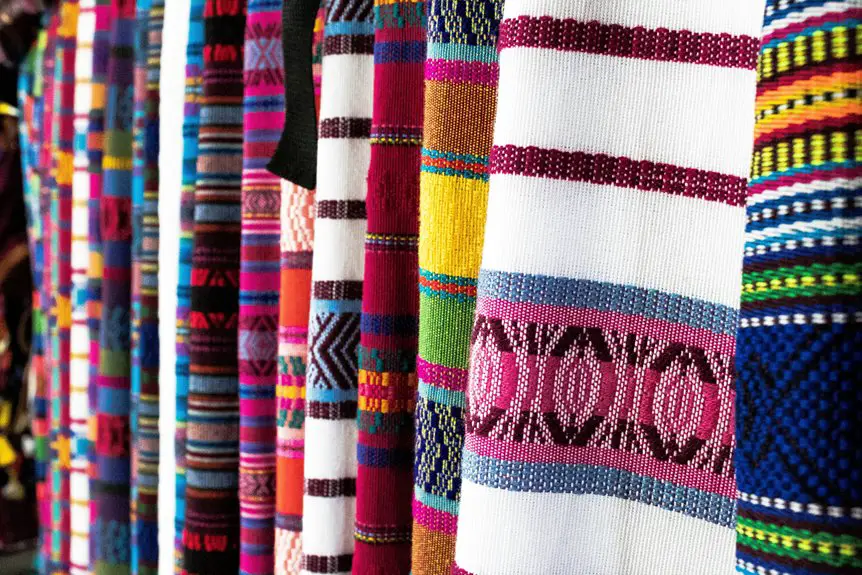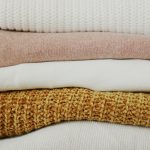When you think about fabric breathability, tight weaves often come to mind as less breathable due to their dense thread arrangement. But that’s not the full story. Factors like fabric thickness, weave pattern, and fiber type also play essential roles in how air moves through the material. Before you decide tight weaves are off-limits for comfort, it’s worth exploring what really influences breathability—and you might be surprised by what you find.
Table of Contents
Key Takeaways
- Tight weave fabrics reduce airflow by minimizing gaps between threads, generally limiting breathability.
- Some tight weave designs allow subtle air movement through balanced thread placement, maintaining moderate breathability.
- Breathability depends not only on weave density but also on fabric thickness and porosity.
- Natural fibers in tight weaves enhance breathability due to their porous structure, unlike many synthetic fibers.
- Different weave patterns and theoretical models help optimize tight weaves for better airflow without losing durability.
Understanding the Impact of Weave Density on Airflow
Although tight weave fabrics often feel dense, their weave density directly influences how much air can pass through.
When you examine the weave structure closely, you’ll notice that a tighter weave reduces gaps between threads, which limits airflow dynamics.
However, not all tight weaves block air equally; some designs cleverly balance thread placement to allow subtle air movement.
You have to evaluate how threads intersect and the pattern they form, as these factors dictate airflow paths.
So, even with a dense weave, the fabric can still offer some breathability depending on its specific weave structure.
Understanding this helps you choose fabrics that meet your comfort needs without sacrificing durability or appearance.
The Role of Fabric Thickness and Porosity in Breathability
While the weave density shapes how air flows through fabric, thickness and porosity also play a big role in breathability.
You’ll find that fabric weight, which often correlates with thickness, influences how much air can pass through. Thicker fabrics with higher fabric weight typically trap more heat and reduce airflow, limiting breathability.
Porosity, or the size and number of tiny holes in the fabric, directly affects moisture management by allowing sweat to evaporate more efficiently.
Porosity enhances moisture management by enabling sweat to evaporate quickly through tiny fabric holes.
Even a tight weave can feel breathable if the fabric has good porosity and moderate thickness.
Comparing Breathability Across Different Weave Patterns
When you compare different weave patterns, you’ll notice they impact breathability in distinct ways. Each pattern’s unique weave characteristics determine how tightly threads interlace, directly affecting airflow dynamics.
For example, plain weaves have a simple over-under pattern, creating a balanced structure that allows moderate airflow. Twill weaves, with their diagonal ribs, pack threads more densely in certain directions, which can restrict airflow slightly but often improve durability.
Satin weaves, known for their long floats, create smoother surfaces with fewer interlacings, sometimes enhancing airflow due to less thread interference. Understanding these differences helps you choose fabrics that balance breathability and strength.
Influence of Natural Vs Synthetic Fibers on Air Permeability
Since the type of fiber greatly affects fabric performance, you’ll find that natural and synthetic fibers influence air permeability in different ways.
Natural fibers like cotton, linen, and wool have a porous structure that allows air to pass through easily, enhancing breathability even in tight weaves. They absorb moisture, which can increase comfort but sometimes reduce airflow slightly when wet.
Natural fibers offer breathable comfort with porous structures, though moisture absorption may slightly limit airflow when damp.
On the other hand, synthetic fibers such as polyester and nylon have a smoother, less porous surface. These fibers tend to trap heat and moisture, reducing air permeability compared to natural fibers.
However, manufacturers often engineer synthetic fabrics to improve breathability by adding micro-perforations or blending them with natural fibers.
Understanding these differences helps you choose fabrics that balance durability and comfort based on your needs.
How Theoretical Models Predict and Enhance Fabric Breathability
Although fabric breathability depends on many factors, theoretical models give you valuable insights into how air flows through tight weaves.
These models simulate airflow at a microscopic level, showing how weave density, fiber shape, and pore size affect permeability. By understanding these dynamics, you can predict how breathable a fabric will be before it’s even made.
Theoretical models also guide fabric enhancement by identifying ideal weave patterns that balance tightness with airflow. Using these predictions, manufacturers can adjust yarn thickness or spacing to improve comfort without sacrificing durability.
Frequently Asked Questions
How Do Laundry Methods Affect the Breathability of Tight Weave Fabrics?
Your laundry methods impact tight weave fabrics’ breathability by affecting fabric care. Using gentle washing techniques preserves the weave’s integrity, preventing shrinkage or damage that could reduce airflow, so always follow care labels carefully to maintain breathability.
Can Tight Weave Fabrics Be Treated to Improve Moisture-Wicking?
Imagine your fabric as a thirsty sponge; you can boost its moisture management with special fabric treatments. These treatments help tight weave fabrics wick sweat away, keeping you cool and comfy during your active days.
What Are the Environmental Impacts of Producing Tight Weave Natural Fibers?
You’ll find that producing tight weave natural fibers involves intensive fiber processing, which can impact the environment. Focusing on sustainable sourcing helps reduce harm, ensuring the process respects ecosystems and minimizes resource consumption.
How Does Fabric Color Influence Thermal Comfort in Tight Weaves?
Think of fabric color like a sponge soaking up sunlight—darker hues increase color absorption, trapping heat and challenging your thermal regulation. Lighter shades reflect rays, helping you stay cooler even in tight weaves.
Are Tight Weave Fabrics Suitable for Athletic or Performance Apparel?
You might find tight weave fabrics limit performance due to reduced breathability and fabric stretch. For athletic wear, you’ll want materials that offer better ventilation and flexibility to support movement and keep you comfortable during workouts.
- Tetron Fabric for Marine Applications: Durability and Use Cases - June 18, 2025
- Tetron Fabric for Outdoor Furniture: Weather Resistance and Care - June 18, 2025
- Tetron Fabric for Wall Coverings: Style and Application Tips - June 18, 2025







